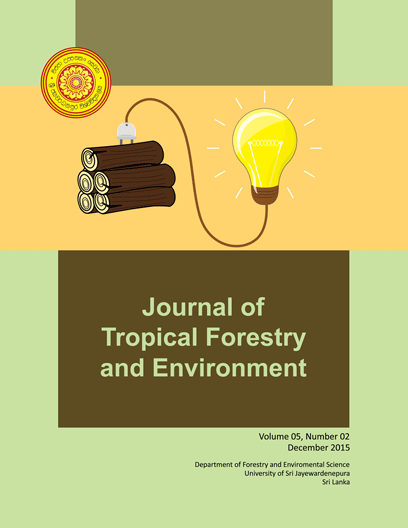Morpho-Physiological Dynamics of Weedy Rice Seeds Collected from Two Contrasting Agro-Ecological Zones in Sri Lanka
DOI:
https://doi.org/10.31357/jtfe.v5i2.2662Abstract
Weedy rice (Oryza sativa L. f. spontanea), seeds remain a longer period in soils at different depths enriching soil seed bank and that contribute to the success of weedy rice as a “weed.” Hence basic information on the level of longevity, dormancy and germination behaviour of weedy rice seeds with relation to its morphology is very important to implement efficient control measures. In this study, weedy rice seeds were collected from six infested locations in Ampara and Matara districts representing two different agro-ecological zones in Sri Lanka. Two widely grown improved varieties (At 362 and Bg 379-2) were assembled as check lines. Thirty panicles per population were randomly collected from each location to determine their morphological characteristics including awn lengths, seed shape, hull colour, pericarp colour along with physiological phenologies such as degree of dormancy, viability, longevity and rate of survival.
Significant variability of seed shape, awn length, hull colour and pericarp colour was observed. Germination rate and survival rates were highly variable and closely associated with awn characteristics. Our study clearly indicated that prolong longevity (more than 24 weeks) and viability of weedy rice seeds in field conditions implying their key role as a weed by enriching soil seed bank. Awned populations are dormant and influence weedy rice population dynamics leading to the competitiveness of this weed. Therefore, management practices have essentially to take them into account and be adapted accordingly. Further, this study inferred that the morpho-physiological variation of the weedy rice seed populations was not associated with the agro-ecological conditions; for example, the dry and the wet zone suggesting rapid seed mediated gene flow throughout the country.
Downloads
Published
How to Cite
Issue
Section
License
The publisher retain the copyrights of contents published, and all open access articles are distributed under the terms of the Creative Commons Attribution-Noncommercial-No Derivative Works 3.0 Unported License[U1], which permits unrestricted use, distribution and reproduction in any medium, provided that the original work is properly cited.
You can download the Legal Code for this License at: http://creativecommons.org/licenses/by-nc-nd/3.0/legalcode


